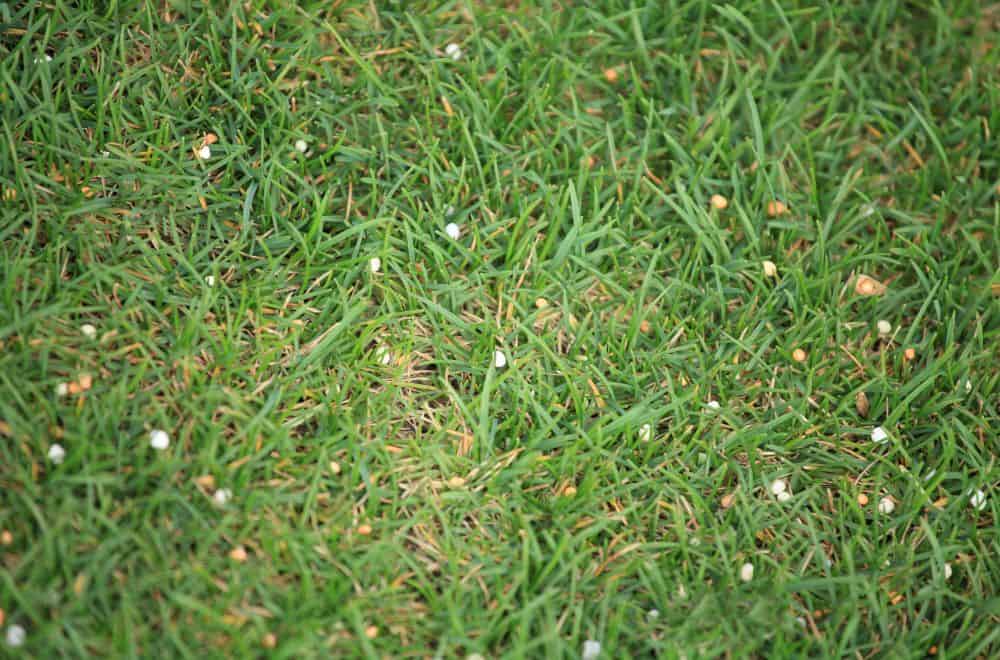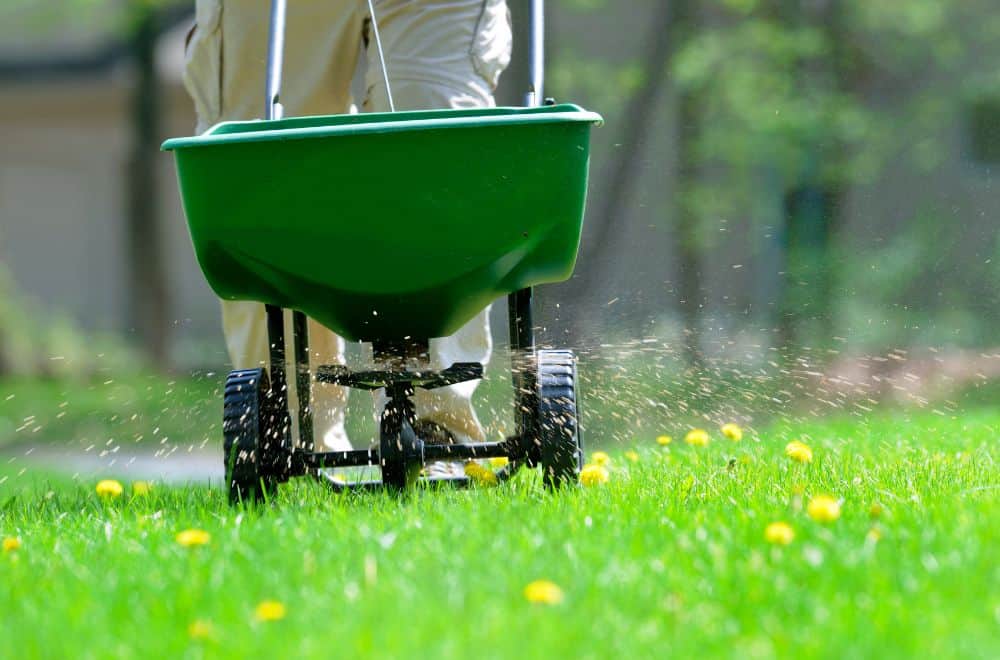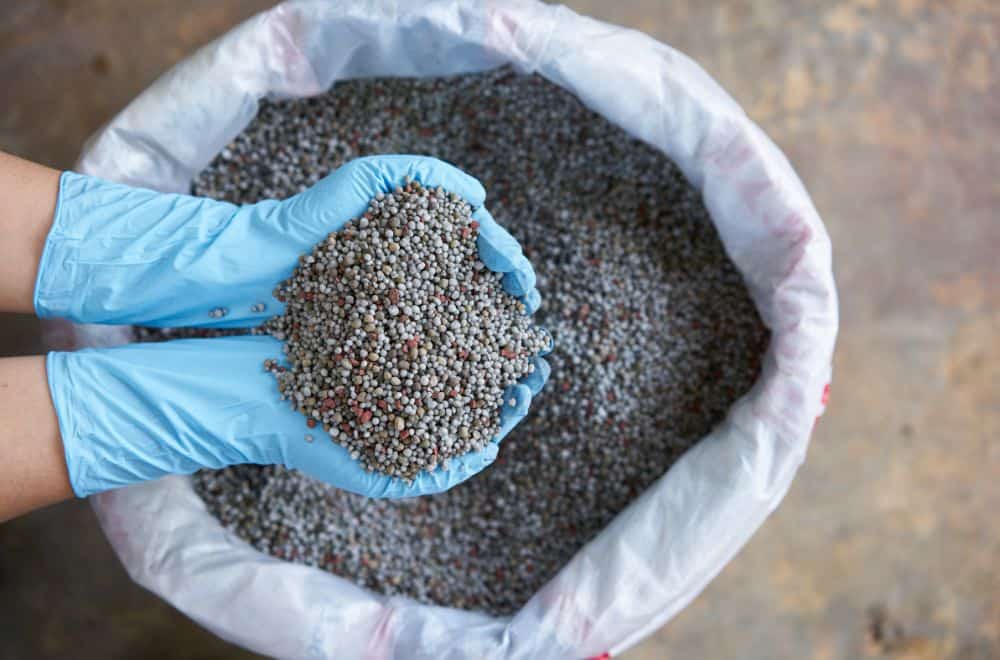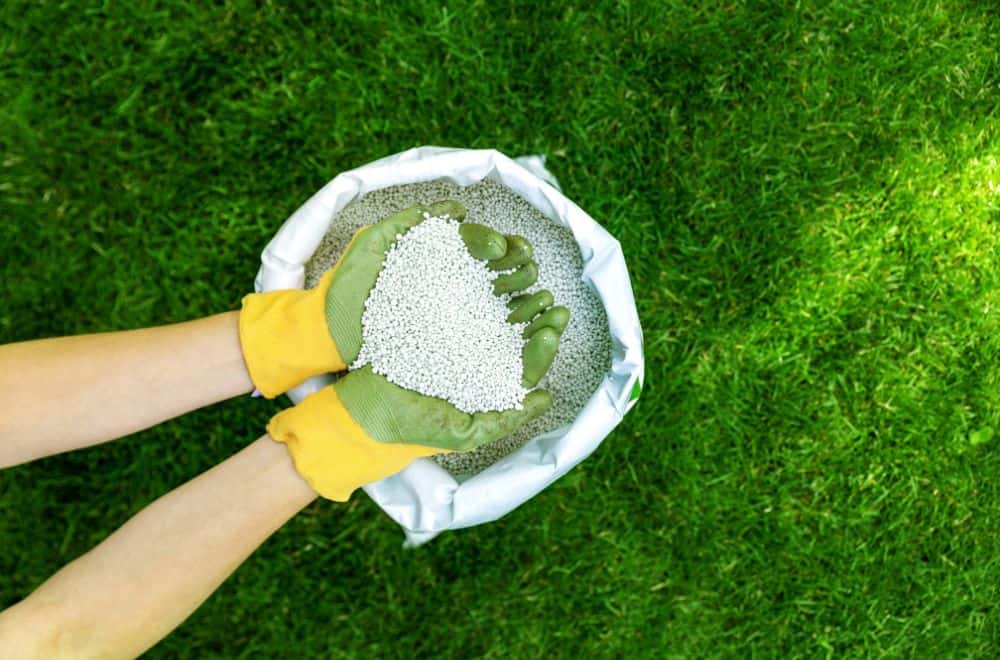Does your backyard grass look unhealthy? This is probably because you still haven’t learned how to add potassium to your lawn. Given that potassium is one of the most important nutrients for the soil, together with phosphorus and nitrogen, a lack of the mineral can severely hamper the growth of plants.
Luckily for you, there are a few products that can help you deal with this issue. Adding organic solutions is the quickest way to improve the fertility of your soil. However, before you can use any substance, it is imperative to perform the necessary lab tests and take other precautionary measures!
Why does my soil lack potassium?
Even if your grass hasn’t turned yellow, you should perform regular soil tests. Keep in mind that potassium levels in the soil tend to fluctuate over time, so you need to be cautious. There are numerous factors that affect potassium levels, such as:
- Time of the year – On average, potassium levels are lowest in November. They will slowly increase during the winter and peak in March.
- Nutrient uptake and removal – Depending on soil properties and environmental factors, average potassium removal can vary significantly from region to region. It is very important to keep track of potassium uptake and removal so that you’ll know how much you need to add during regular uptakes. That way, you can save a lot of money on soil testing.
- Microbes – Certain microbes can have a negative impact on iron within the soil. As a result, layers of ground will fall down, trapping potassium inside and rendering it useless.
- Soil freezing – Due to freezing, potassium variations can be more severe in colder areas.
- Stratification of nutrients – Keep in mind that the levels of potassium can vary based on depth. Upper layers of the soil tend to have much more of this mineral compared to lower levels.
- Different results – Laboratories have different practices, which may lead to completely different results based on who’s performing the test and based on the methods they’re using.
- Soil factors – There are a lot of factors that will have a direct or indirect impact on the soil as well as potassium within. You need to consider things such as management history, erosion, and placement.
In some cases, your grass may still look rundown even after adding potassium. If that happens, make sure to add organic calcium-magnesium or magnesium sulfate supplement. By doing so, you’re regulating the proportion between these two nutrients (which is what caused the issue in the first place).
Your lawn may also be affected by some other factors. For example, grass might not be able to absorb potassium due to high soil acidity. This is why you need to be aware of other factors before you start adding any products into the ground.
How to tell if your soil is lacking potassium?

You can easily determine that the soil is barren by just looking at it; yellow grass and brown edges are perhaps the best tells. Furthermore, you can touch the ground to determine whether or not it has enough potassium. If the soil is deficient, it will feel like sand. Potassium will leach out due to the high solubility of the ground.
Most people fix this issue by adding natural compost or manure. Products such as kelp meal are a great way to deal with this issue. In the following chapters, we will review some of the options, so make sure to stick with us!
In order to understand what’s happening with the soil and to determine the level of potassium deficiency, most homeowners will perform a regular lab test. It is usually done during the spring, and you can do it at any local soil laboratory. If your lawn looks good and doesn’t show any signs of decay, you can do this test every 2 years.
During the process, your soil will be tested for 3 main elements: potassium, nitrogen, and phosphorous. Then, the lab will assign appropriate scores ranging from very low, low, optimum, and high. Keep in mind that your task is not only to add potassium to the ground but balance the amount of nutrients.
Sometimes, the drop in potassium can occur practically overnight. For example, your flowers will take massive amounts of nutrients during flowering, quickly leading to depletion.
Adding potassium to your lawn

You can add potassium in 5 simple steps:
- Start by contacting your local agricultural extension office. They can give you all the necessary information about how to perform the soil test.
- Go to your yard and collect soil samples. You will need about 10 to 20 of them collected from about 3 inches of depth. Mix all these samples together and place them in containers.
- Most fertilizers have nitrogen, potassium, and phosphorus, and you’ll need to buy the one that has a very high ratio of potassium. Using all these 3 nutrients simultaneously shouldn’t pose a problem as long as they have more potassium than the other two substances.
- Fertilizer should be applied bi-annually, each spring and fall. You will have to add potassium based on the soil test. Staff at the University of Purdue has made a calculation according to which you need 6 pounds of muriate of potash per 1,000 square feet of lawn. Keep in mind that this applies to lawns that are between 0 to 25 ppm. This amount drops with the increase in ppm. For example, lawns that are between 25 to 50 ppm need 4 pounds of fertilizer, those that are between 50 to 75 will need 2 pounds, and lawns that are between 75 and 100 will need 1 pound per 1,000 feet.
- Make sure to evenly spread the fertilizer all over the lawn. You should do it while the weather is cool and the soil is dry.
You can also use compost 3 times a year to increase potassium levels within the soil.
How to choose the best product for your lawn?

When choosing an optimal potassium product for your soil, you can go with long-term or short-term solutions. We prefer soluble potassium; it can stimulate photosynthesis in plants allowing your grass to remain healthy. The main advantage of soluble is their ability to dissolve quickly in water which will deliver them into the solid relatively quickly.
Most people will opt for fast-acting solutions such as potassium chloride or potassium sulfate. These two minerals are often used for lawn winterizing. Potassium chloride is the cheaper solution. However, we suggest that you go with potassium sulfate because it won’t interfere with good bacteria within the soil.
Before applying the chemical compound, you have to read the label carefully. It should provide all the information regarding the optimal quantity of substance for a lawn. We also suggest that you give advantage to organic items that were certified by the Organic Mineral Review Institute.
Here are some of the potential solutions:
- Dried kelp meal has a lot of nutrients that are valuable for the soil. When using it, make sure to place it into the ground quickly. You will need just a small quantity of the substance to restore previous potassium levels.
- Hardwood ash is full of potassium. You can apply it straight away to the soil, or you can add it to compost. It is especially great if you want to increase the pH levels of the soil but, make sure to monitor the ground’s acidity.
- A lot of people use sulfate of potash-magnesia, otherwise known as Sul-Po-Mag. It is a relatively cheap solution that will increase the levels of both magnesium and potassium in the soil.
You can also go with slow-releasing chemicals. They are not ideal if you’re grass has already started whittling away. Nevertheless, slow-release solutions are great in the long run because they can significantly improve the quality of the soil.
One of the things you might want to try is greensand. You will need about 5 pounds of it per 100 square feet. Be patient with the substance as it takes some time to show results. Like some of the other substances on the list, they can be a great addition to your compost, further improving its impact on the soil.
Besides greensand, there are two other natural solutions that can improve the soil: granite dust as well as various fruits and vegetables. Granite dust is a great, long-term solution for any type of soil. You can also use various fruits and vegetables, like lemons, bananas, tomatoes, and spinach, by placing them into the ground and thus improve its quality.
Conclusion
Lack of potassium can be a major problem for any homeowner who want to have a nice, luscious lawn. Besides grass, it will also affect other plants in your garden. This is why you need to perform regular tests.
As long as you follow the steps described in this article, you shouldn’t have any issues regulating potassium levels in the soil. If you have any additional questions, make sure to ask us in the comment section below!

Leave a comment